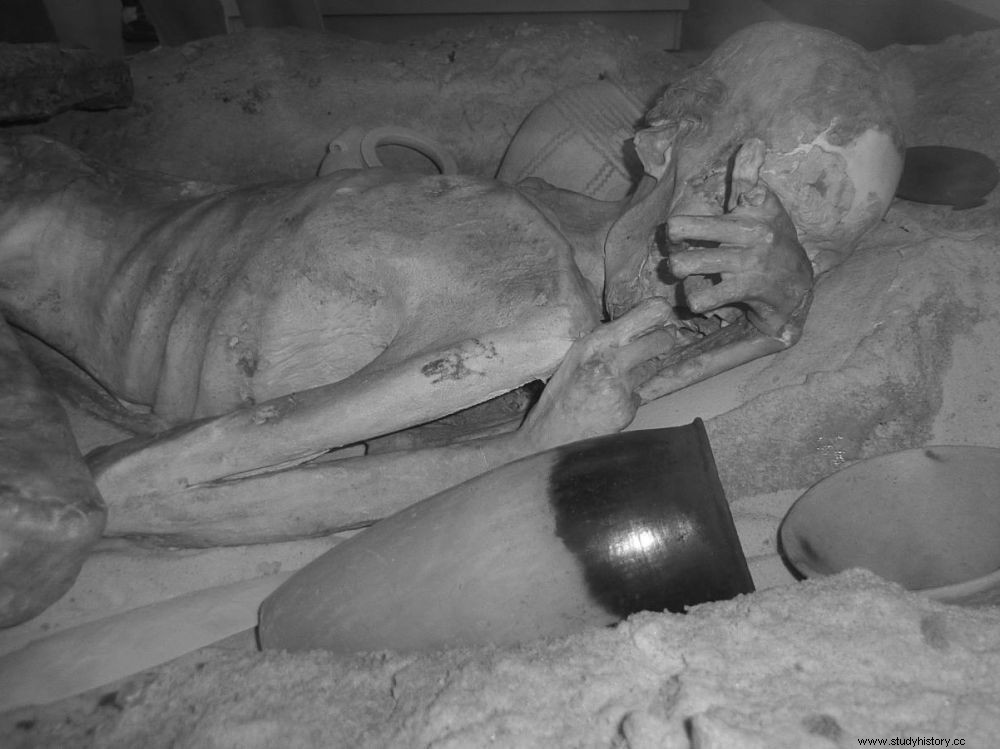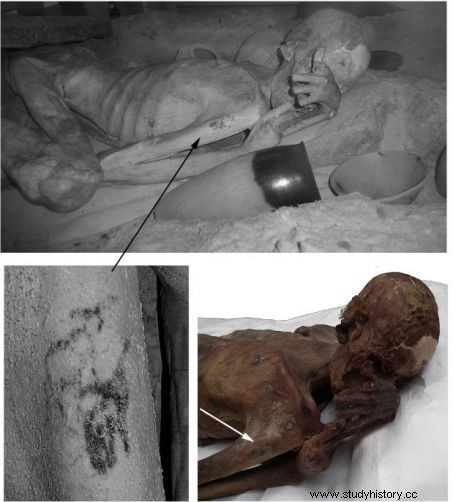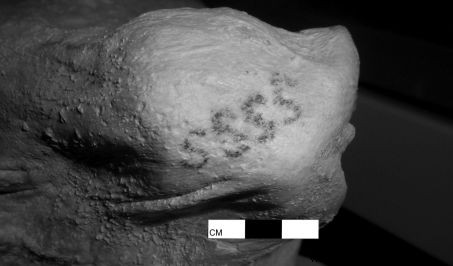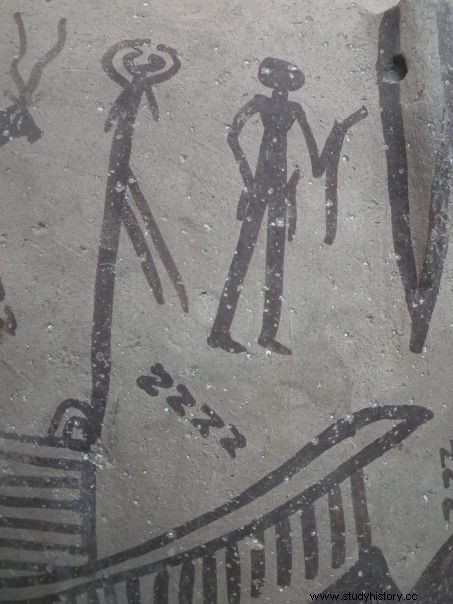Natural Egyptian mummies reveal the oldest figurative tattoos in the world.

Infrared image of tattooed Mummy A from Gebelein, Egypt.
For a long time, Egyptologists believed that ancient tattoos only concerned female mummies in the Nile Valley. But the use of infrared imagery has made it possible to discover unexpected ones on two naturally mummified bodies, exhibited since 1900 in the showcases of the British Museum, in London. Nicknamed the "Gebelein mummies", from the name of the region south of present-day Luxor where they were discovered in 1899, they date from the predynastic period - that before the unification of Egypt (4000-3100 BC). Our era). A sheep and a bull adorn the right arm of a man in his twenties, while a series of four enigmatic "S's" wind their way down a woman's right shoulder, complete with a linear motif "cane" on the top of his right arm.
"At more than 5,300 years old, these results thus push back by a millennium the oldest tattoos known until then in Africa “, explains to Sciences et Avenir Daniel Antoine, one of the co-signatories of the study published in the journal of the Journal of Archaeological Science . The latter had been revealed in 2016 by Cédric Gobeil, of the French Institute of Oriental Archeology (IFAO), head of the French mission of Deir el-Medina:"This new discovery of Gebelein mummies overturns the idea who wanted only women to be tattooed “Cédric Gobeil told Sciences et Avenir.
Infrared image of Gebelein man. Bottom left, the detail of the animal tattoo. © the Trustees of the British Museum
Tattoos in S, of the female mummy of Gebelein. © the Trustees of the British Museum
Made from soot – whose antiseptic properties are renowned -, these tattoos could have been applied using bronze needles, bone tips, or even acacia thorns. But what were their functions? Aesthetics? Nuns? Symbolic? Magical? In the past, a dozen naturally mummified bodies also bearing tattoos had been unearthed in other regions of Africa, in particular in southern Egypt, in Nubia, in present-day Sudan. Bodies of men, women and adolescents from later times whose tissues had been preserved, dried out by the salinity and aridity of the desert. For the authors of the recent article, "the ornaments of the Egyptian mummies of Gebelein must have a link with the contemporary iconographic symbols found on the walls of rock shelters, or the decorations of ceramics ". This is the case of the sheep (Ammotragus lervia) and bovid (Bos primigenius ) discerned on the man's parchment skin, as much as the young woman's S-mark, spotted on fertility-related clay figurines and pottery.
Ritual scene on pre-dynastic Egyptian pottery decorated with S-shaped elements similar to those adorning the shoulder of the Gebelein woman. © the Trustees of the British Museum
Radiocarbon dating and iconographic themes indicate above all that these tattooed Egyptians - now bearers of the oldest tattoos in the world - were almost contemporary with Otzi, the Iceman whose skin, also covered with 61 geometric lines, has been preserved. in the Tyrolean Alps for 5000 years. Proof of the wide geographical spread of body language - even therapeutic treatments - practiced within societies without writing.



